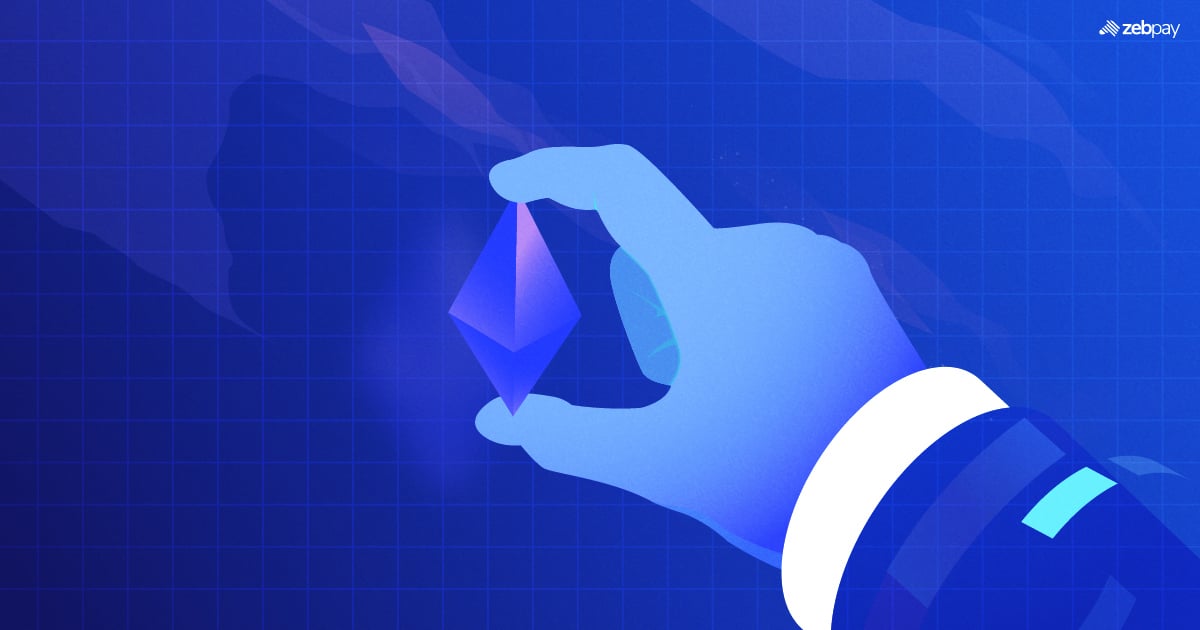Ethereum’s merge upgrade will increase the number of transactions on the network to 100,000 per second, as per Ethereum founder Vitalik Buterin. It is widely known that Ethereum’s transition to Proof of Stake from Proof of Work will be an energy efficient process. While the mining process reduces energy consumption, the increase in transaction volume is the cherry on top of the cake.
Stages of the Ethereum Upgrade
As per the founder’s statements, there are a series of changes which the Blockchain will go through from September onwards. These stages are Merge, Serge, Verge, Purge and Splurge. Each of these stages work on different aspects of the network upgradation and are set to improve the blockchain efficiency like never before.
Few details of the stages have been made public, and you can know more about the same below.
Read more: Blockchain vs Crypto
Merge – Transition of the Blockchain from Proof of Work to Proof of stake reduces the energy consumption of the network by close to 95%. The miners will no longer have to expend massive amounts of energy to be rewarded in coins, but will stake their earnings and in return get Ether(ETH) as reward.
Read more : Proof of Work vs Proof of Stake
Serge – An important reason for the upgrade is the scalability of the network. The Serge stage is set to improve the scalability of the network through Sharding. Sharding involves splitting data into several blocks and distributing it across the network to reduce the computational burden on each node.
Distributed computing has several components in the database. For eg: Time of transaction, the hash, public address of the receiver and the sender are some of the components of the database.
As networks grow in size, the burden on each node increases as all transactions are recorded on each node. For this reason, Sharding is necessary to distribute the processing burden.
Verge– Scalability also brings in the challenges for the network to be stable during operations. Verge upgrade will ensure that the network is stable while the transactions are taking place through Verkel trees and other related features.
Purge– This stage will allow the elimination of technical debt and historical data. Gas feemodification is also set to happen at this stage. Gas fee is the transaction fee the users pay for utilising the networks.
When a user utilises the network to place a transaction, a Gas fee is paid to the miner to include the transaction onto the Blockchain ledger. As you all know, all transactions have to be appended onto the Blockchain network and validated by the network to be approved.
Gas fees are dynamic prices that get ridiculously high sometimes. It so happens that in some cases, the fee is higher than the Digital Asset you would like to purchase on the Blockchain.
The high gas fee on the ethereum network is attributed to the congestion on the network. This congestion is reduced through the Purge process. This reduces the Gas fee and could increase the number of users willing to use Ethereum Blockchain for transactions.
Splurge– All the miscellaneous activities such as Account abstraction and Short term Miner Extractable Value(MEV) mitigation are set to take place at this stage.
Final Thoughts
While these concepts are complicated to understand, they are necessary and well thought out. The expansion plans of the Ethereum are setting high standards in the Blockchain community.
These upgrades, starting with the Merge, are probably the most awaited events in the Crypto Landscape for the near future. The current Ethereum Network executes close to 25 Transactions per second. An upgrade to 100,000 transactions per second is an astronomical increase.
The upgrade is set to be a boon to everyone who uses the Ethereum Blockchain. Transactions will get faster, fees will reduce and more innovators can use the network to build Smart Contract based applications. While time will tell how seamlessly this transition happens, it is nothing short of a marvel in theory.
To know more visit ZebPay. Subscribe to our newsletter to get the latest updates on Crypto.

